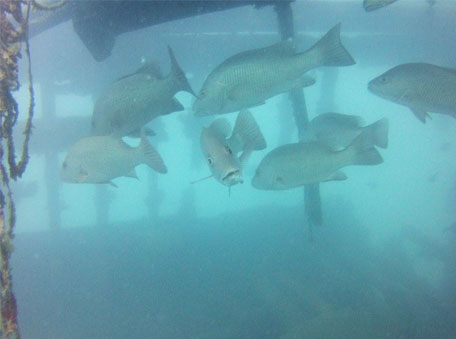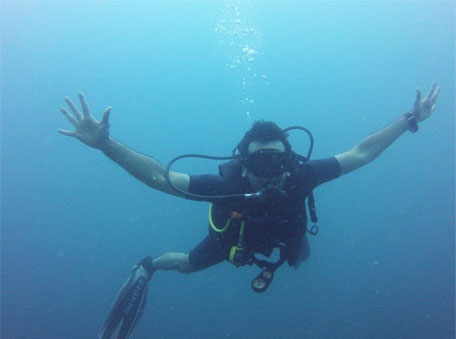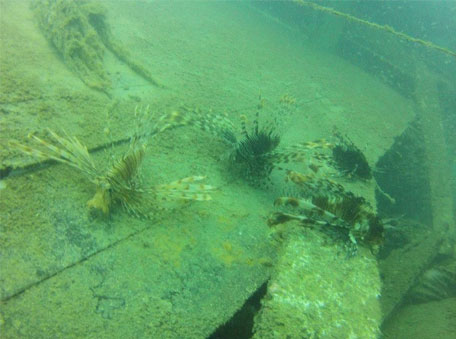Most professors take a sabbatical at some point during their tenure, typically to pursue a research interest, work on a book, publish a paper or teach abroad. While I’m no professor and haven’t even managed to teach my dog how to fetch, I felt I was just as entitled to a sabbatical as a Harvard professor or an IIT scientist. I approached my boss in early 2013 with a six month “leave of absence” request and he granted me one without much hesitation; a resounding endorsement of how much they valued my presence in the company.
 With my leave approved, I headed home to India, announcing to everyone and anyone who asked, that I’d taken a “sabbatical” to travel, explore other career opportunities, and potentially find a wife. The smart ones figured out that I basically wanted to be a “bum” for a little while and was using fancy words to conceal my true intent. So here I was, in my early thirties, unemployed and living with my parents, which almost immediately ruled out any possibility of finding a wife.
With my leave approved, I headed home to India, announcing to everyone and anyone who asked, that I’d taken a “sabbatical” to travel, explore other career opportunities, and potentially find a wife. The smart ones figured out that I basically wanted to be a “bum” for a little while and was using fancy words to conceal my true intent. So here I was, in my early thirties, unemployed and living with my parents, which almost immediately ruled out any possibility of finding a wife.
After spending a few months in Mumbai, attending a number of weddings and sitting through numerous interrogations by relatives and friends as to when they’d be lucky enough to attend mine, I figured it was time to take a break and work on rebuilding my rapidly dwindling sanity. That’s when I impulsively booked a trip to the Andaman Islands based on a recommendation from a friend, to go scuba diving.
 My father, skeptical about most things in life, immediately started rattling off all the dangers of scuba diving, the risk of safety lapses by Indian-run adventure sports outfits and just stopped short of telling me I could become dinner for a vacationing Loch Ness monster, to deter me from going. Fortunately, as an adult with an almost fully-developed brain, I ignored these warnings, set off and it was one of the best decisions I’d ever made.
My father, skeptical about most things in life, immediately started rattling off all the dangers of scuba diving, the risk of safety lapses by Indian-run adventure sports outfits and just stopped short of telling me I could become dinner for a vacationing Loch Ness monster, to deter me from going. Fortunately, as an adult with an almost fully-developed brain, I ignored these warnings, set off and it was one of the best decisions I’d ever made.
After a flight to Kolkata from Mumbai, three to four hours overnight at the airport, a connecting flight to Port Blair, a government ferry to Havelock, and a twenty minute auto rickshaw ride later, I finally arrived at my diving school. Accommodations were simple and consisted of basic thatched huts which were comfortable barring the field mouse that I heard scurrying around one evening. A restaurant on the property that served a variety of seafood delicacies was run by an Irishwoman who had fallen in love with Havelock during her first visit, and decided that she wanted to live there forever.

Aspiring divers like myself, and expert divers ranged from young professionals from Hyderabad and Bangalore to an Indian American employee of the US Foreign Service posted in Chennai, to a Swedish couple traveling around Southeast Asia for six months. It occurred to me that I knew very little about this beautiful little island which belongs to my country, while tales of its marine life and sublime beaches had reached all corners of the world.
 The diving school was run by a number of well-educated and well-spoken young Indians who had chosen adventure sport as a career rather than pursue the Indian-parent-pleasing careers in medicine, engineering, IT or business. One young diving instructor had to bring his parents to Havelock before he accepted the job offer, to convince them that he was going to be working for a legitimate adventure sport company that was attracting hundreds of tourists from India and abroad.
The diving school was run by a number of well-educated and well-spoken young Indians who had chosen adventure sport as a career rather than pursue the Indian-parent-pleasing careers in medicine, engineering, IT or business. One young diving instructor had to bring his parents to Havelock before he accepted the job offer, to convince them that he was going to be working for a legitimate adventure sport company that was attracting hundreds of tourists from India and abroad.
The diving experience was one that will remain indelible in my memory as I swam amongst the most resplendent ocean dwellers including clownfish, parrotfish and lionfish among others. I drifted alongside schools of barracuda, spotted sea turtles, giant rays and even observed nocturnal crustaceans and bioluminescence during a night dive. Scooters were readily available for hire which allowed me to spend an evening watching a fiery sunset with my newly made friends at Radhanagar beach on the other side of the island.
 There are numerous natural and historical sites in mainland India which have suffered the wrath of indiscriminate tourist operators and lax local preservation laws. Due to its distance from the mainland, the Andaman Islands have been relatively inaccessible, but with a rising middle class and a flurry of low cost airline operators, this sanctuary is now also within easy reach to a larger population. The diving school I attended, along with a few other such schools, is striving to promote eco-tourism.
There are numerous natural and historical sites in mainland India which have suffered the wrath of indiscriminate tourist operators and lax local preservation laws. Due to its distance from the mainland, the Andaman Islands have been relatively inaccessible, but with a rising middle class and a flurry of low cost airline operators, this sanctuary is now also within easy reach to a larger population. The diving school I attended, along with a few other such schools, is striving to promote eco-tourism.
While it is refreshing to see Indian tourists anxious to explore their country, including the Andaman Islands, it is my hope that the local authorities will promote this destination as one which should be treated with extreme care, like a premature baby. The delicate ecosystems here can be easily thrown off-balance by unregulated and uninformed tourist operators. Early signs of concrete eyesores along the beaches discouraged me on my ride to and from the ferry terminal but I do believe that there are still opportunities to change the way this island is treated. Small Central American countries like Belize and Costa Rica can be mimicked for the strides they’ve made in preserving their natural environment while growing their tourist numbers, and improving the lives of those supporting the tourism industry and the greater economy.
I hope to go back to the Andaman Islands someday, perhaps with this elusive wife I’ve spoken of earlier, and I sincerely hope that by then it has transformed into a model of eco-tourism and sustainability that others around the world will attempt to mimic.

 [/column]
[/column]